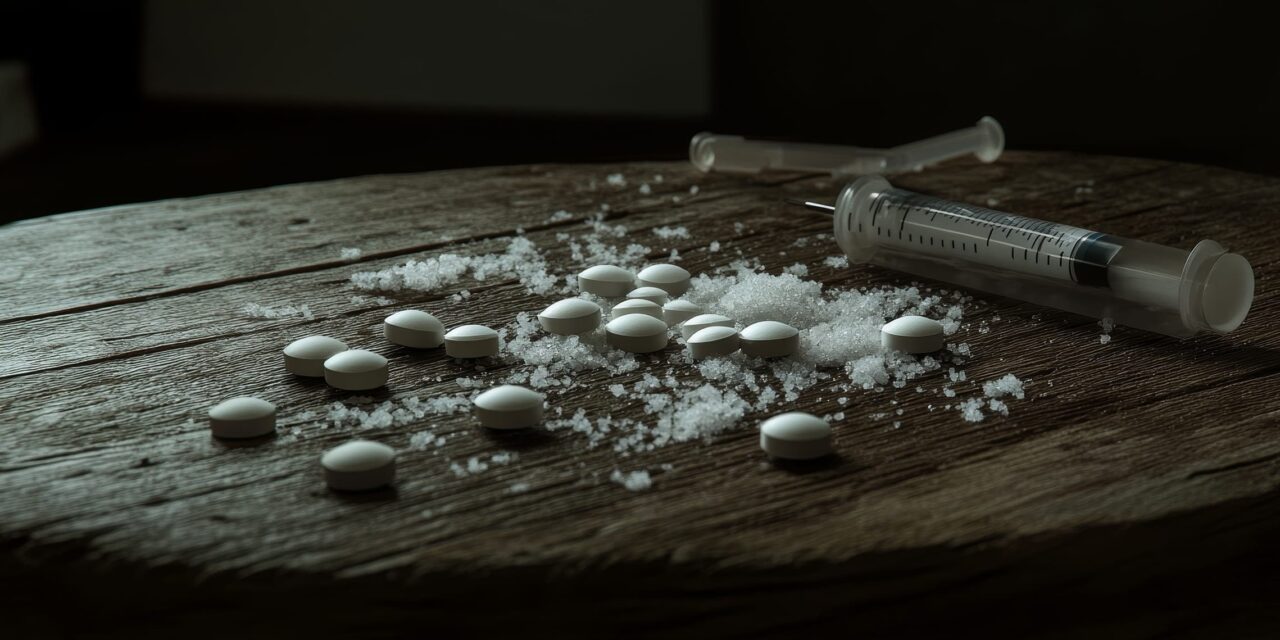Faster, more accurate testing is helping clinicians identify synthetic opioids sooner and treat overdoses more effectively.
By Jared Jaeger, PhD, Clinical Science Liaison, QuidelOrtho
In 2024, overdose deaths in the US fell by nearly 30,000 from the year before, according to the US Centers for Disease Control and Prevention. This decrease of about 27% was one of the most significant since the opioid crisis began in the 1990s.1 Still, communities continue to feel the devastating impact of overdoses from opioids.
Experts believe many recent spikes in overdoses and overdose deaths across the US, including Wisconsin, Tennessee, New York, Maryland, and California, are due to synthetic opioids, like fentanyl.2-6 Synthetic opioids can have more severe effects in patients and can often be mixed with other drugs or hidden in counterfeit pills. This means that in a crisis increasingly dominated by synthetic opioids, early diagnosis is critical to helping save lives.
Rise of More Potent Synthetic Opioids
The opioid crisis has evolved, and synthetic opioids like fentanyl, which is 50 times stronger than heroin, are now the cause of the majority of overdose deaths.7 Another potent synthetic opioid that is becoming more prevalent is carfentanil, which was originally developed to tranquilize large animals such as elephants. It is 100 times stronger than fentanyl, meaning a nearly microscopic dose can be deadly. It is often found mixed with other drugs or pressed into pills that look like prescription painkillers, which increases the likelihood of acute intoxication, especially among users who are unaware they are ingesting such a powerful substance.8
Synthetic opioids are also frequently used in combination with other drugs, such as stimulants like cocaine and methamphetamine, which can make the underlying cause of an overdose more challenging to identify and therefore treat.8,9 To keep pace with the ever-changing drug landscape, emergency departments must adapt diagnostic capabilities and expand testing panels to be able to diagnose and quickly treat overdoses due to synthetic opioids.10
Challenges in Treating Acute Intoxication with Synthetics
One major challenge that comes with synthetic opioids is the fast onset of acute intoxication, where symptoms can begin in just a few minutes after exposure, and a patient’s condition can deteriorate rapidly.8 This means that quick treatment of an overdose of synthetic opioids is especially critical.
Another challenge is that naloxone, also known as Narcan, may not be as effective in reversing a synthetic opioid overdose. Narcan is an opioid antagonist that can help save the life of a person experiencing an opioid overdose by quickly restoring normal breathing. But, with potent synthetics or other drugs absorbed through the gut like fentanyl, the positive effects of Narcan may not last as long as the drugs causing the overdose. Multiple high doses of Narcan may be needed to effectively treat an overdose, so repeated testing and monitoring are important to keep a patient’s condition from spiraling out of control.8,10
Finally, the risk of fatality from an overdose can also increase with the use of multiple drugs at once—whether intentionally or unintentionally—and they may require more aggressive forms of treatment. Healthcare providers must have rapid and accurate toxicology results when a patient comes in with acute intoxication so they can provide the proper treatment quickly.9,11,12
The Role of Diagnostics
To provide the proper care to patients experiencing acute intoxication from synthetic opioids, healthcare providers need comprehensive, accurate, and efficient diagnostics. Many of the emerging synthetic opioids can go undetected through routine drug screens and can require advanced detection methods like mass spectrometry. It’s critical for healthcare systems to broaden screening protocols and modernize toxicology panels, as well as expand staff training, to keep pace with an evolving drug landscape.
Early and accurate identification of the drug causing an overdose can reduce a patient’s risk of fatal complications or delayed symptoms that can arise after initial treatment.12 For patients experiencing acute intoxication from multiple drugs at once, accurate and repeated testing and continuous monitoring are critical. Patients can experience recurring symptoms long after initial treatment.9,10
Early diagnostics go beyond identifying the cause of an opioid overdose, however. They can help patients receive the right treatment quickly, lower the risks of fatal outcomes, and enable patients to receive substance use disorder treatment.13,14
Synthetic opioids continue to cause overdoses and fatalities due to their increased potency. As the opioid crisis evolves and new, more powerful synthetics become more prevalent, we must adapt our testing strategies to provide clinicians with the information needed to help treat patients and save lives.13,14
ID 332907701 | Ai © Andrei Dzemidzenka | Dreamstime.com
References
- PBS. What’s behind the significant drop in opioid overdose deaths. Accessed 2025 July 28 2025. Available at https://www.pbs.org/newshour/show/whats-behind-the-significant-drop-in-opioid-overdose-deaths
- ABC 7. Overdose death in Riverside County linked to new opioid 100 times stronger than fentanyl. Accessed 2025 July 28. Available at https://abc7.com/post/carfentanil-powerful-new-opioid-linked-riverside-county-overdose-death/17231316/
- Long Island Guide. Suffolk County issues urgent warning after deadly overdoses linked to fentanyl-laced drugs in Coram. Accessed 2025 July 23 2025. Available at https://www.longislandguide.com/2025/07/13/suffolk-county-issues-urgent-warning-after-deadly-overdoses-linked-to-fentanyl-laced-drugs-in-coram/
- Fox 17 Nashville. Metro Health warns of fatal drug overdose spike in Nashville. Accessed 2025 July 28. Available at https://fox17.com/news/local/metro-health-warns-of-fatal-drug-overdose-spike-in-nashville
- The Baltimore Sun. 911 calls spiked after first day of mass overdose event in Baltimore, data shows. Accessed 2025 July 28. Available at https://www.baltimoresun.com/2025/07/14/overdose-911-calls-baltimore-data/
- Spectrum News 1. Public health officials warn of overdose spike in Dane County. Accessed 2025 July 23 2025. Available at https://spectrumnews1.com/wi/milwaukee/news/2025/07/15/dane-county-overdose-spike
- American Psychiatric Association. Opioid Use Disorder. Accessed 2025 July 28. Available at https://www.psychiatry.org/patients-families/opioid-use-disorder
- United States Drug Enforcement Administration, Carfentanil: A Synthetic Opioid Unlike Any Other. Accessed 2025 July 28. Available at https://www.dea.gov/stories/2025/2025-05/2025-05-14/carfentanil-synthetic-opioid-unlike-any-other
- World Health Organization. Opioid overdose. Accessed 2025 July 7. Available at https://www.who.int/news-room/fact-sheets/detail/opioid-overdose
- National Institute on Drug Abuse. Opioids. Accessed 2025 July 7. Available at https://nida.nih.gov/research-topics/opioids
- Manjón-Prado H, Serrano Santos E, Osuna E. Patterns of polydrug use in patients presenting at the emergency department with acute intoxication. Toxics. 2025;13(5):380.
- Volkow ND, Blanco C. The changing opioid crisis: development, challenges and opportunities. Mol Psychiatry. 2021;26(1):218-33.
- Luka S, Golea A, Tat RM, et al. The use of biomarkers testing in Emergency Department. J Crit Care Med (Targu Mures). 2025;11(2):164-72.
- Newsome E, Klein G, Hoy K, et al. Diagnostic expertise in the emergency department. Journal of Cognitive Engineering and Decision Making. 2025;0(0).
About the author: Jared Jaeger, PhD, is clinical science liaison at QuidelOrtho. Leveraging a strong technical foundation, he brings scientific expertise to strategically support both internal teams and external stakeholders. As a liaison between research, commercial, and clinical communities, Jaeger translates complex scientific data into actionable insights that advance patient care and support evidence-based decision-making.





